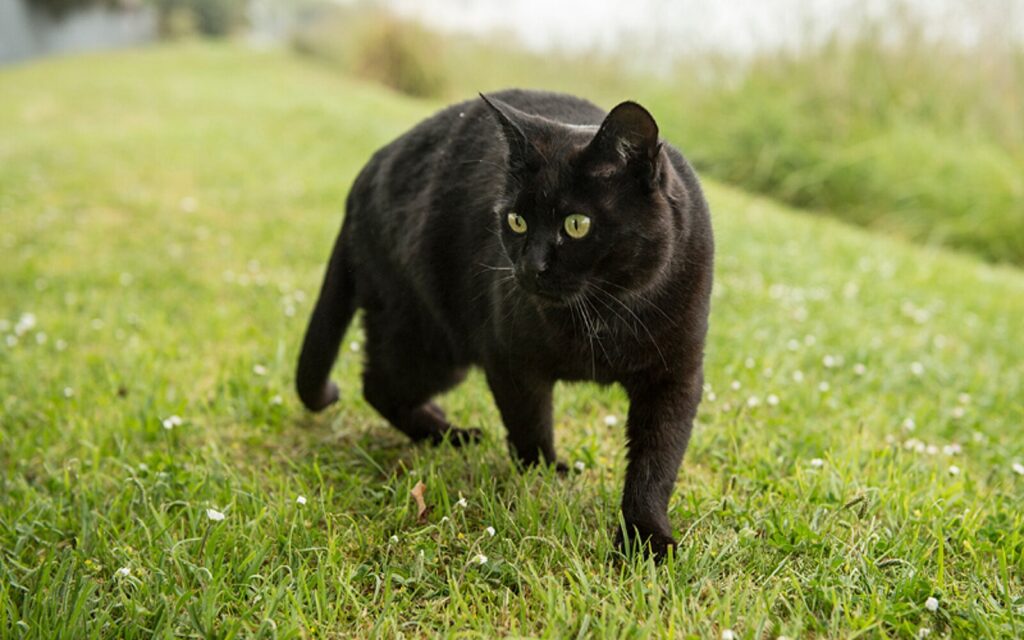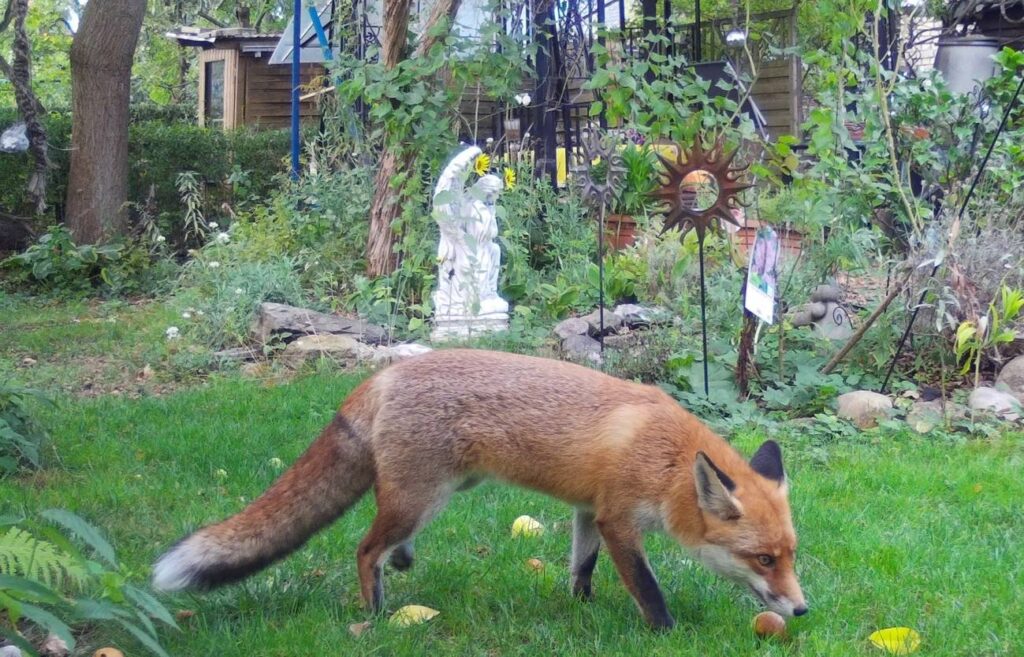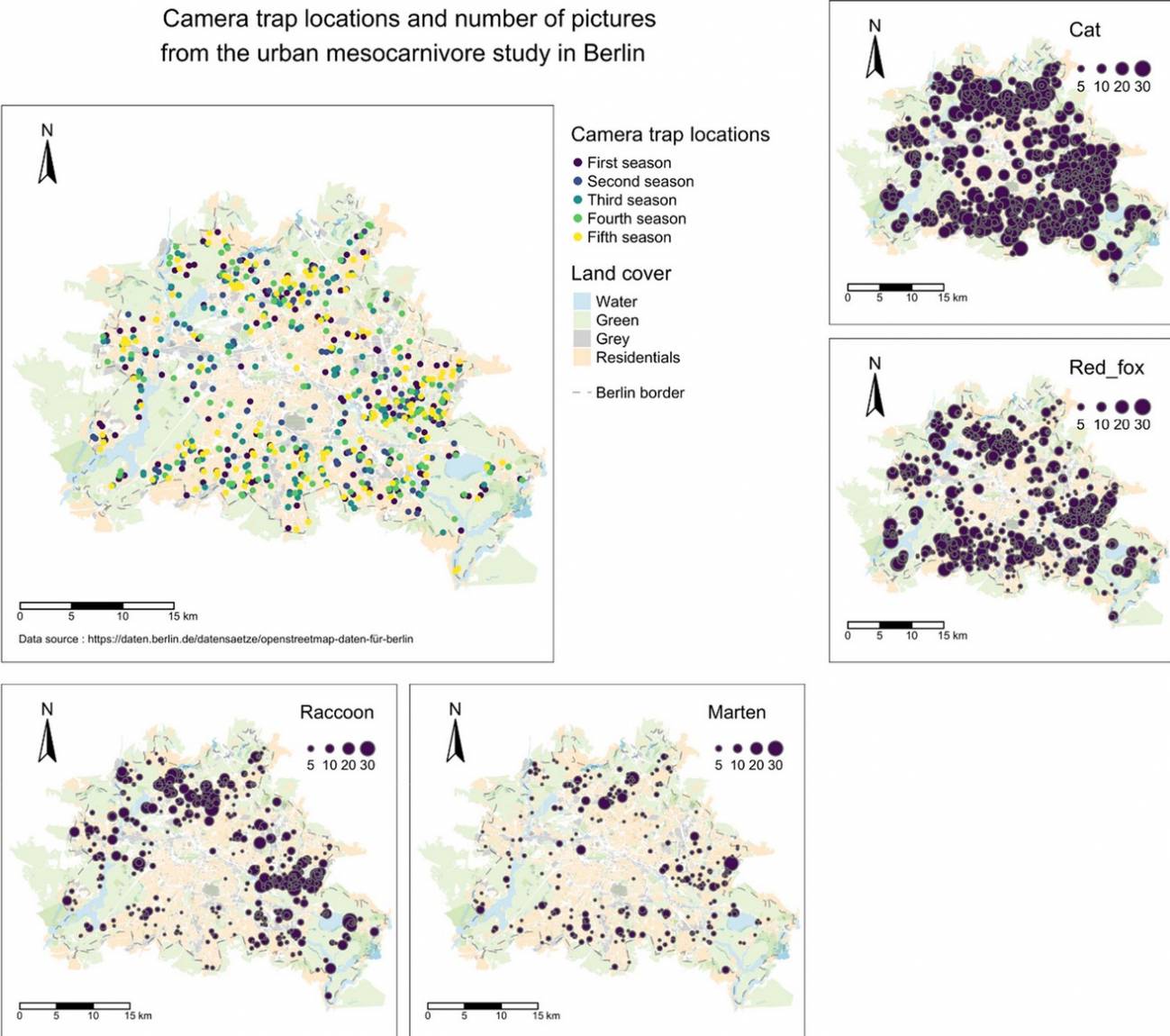Un laboratorio en el jardín: así se relacionan los animales salvajes de la ciudad mientras no hay humanos
02/01/2022 Redaccion
Gracias a decenas de miles de fotografías tomadas por los vecinos de Berlín en un proyecto de ciencia ciudadana, un equipo de científicos ha analizado las relaciones ecológicas en parques privados entre zorros, mapaches, garduñas y gatos.

Evitar o competir, comer o ser comido, aprovecharse o cooperar: las comunidades de animales salvajes se vertebran en torno a las interacciones que se dan cuando comparten espacio.
Los entornos urbanos representan un caso especial, ya que la presencia e influencia humanas podrían cambiar las reglas del juego ecológico de forma sustancial.
¿Cómo se relacionan los carnívoros salvajes en una ciudad? ¿Ha afectado la cuarentena a su comportamiento?
Para responder a estas preguntas, un equipo de científicos del Instituto Leibniz para la Investigación de la Vida Silvestre y Zoológica (Leibniz-IZW) instaló alrededor de 150 cámaras en los jardines privados de distintas casas de Berlín, con la colaboración y el permiso de sus vecinos, con el objetivo de analizar el comportamiento de los zorros, los mapaches, las garduñas y los gatos.
Se instalaron alrededor de 150 cámaras en jardines de Berlín para analizar el comportamiento de zorros, mapaches, garduñas y gatos
El lapso de tiempo analizado fue del otoño de 2018 hasta el otoño de 2020. Los resultados se presentan en la revista Journal of Animal Ecology.
El equipo investigador dividió la ciudad de Berlín en una retícula, compuesta de 300 celdas cuadradas de dos kilómetros de lado, y durante cinco períodos de un mes de duración cada uno el equipo de investigación recopiló y analizó miles de imágenes de la actividad de la vida salvaje de la ciudad.
El análisis es parte del proyecto ciudadano “Investigadores de la vida salvaje”, liderado por Stephanie Kramer-Schadt, científica del Leibniz-IZW (Alemania).
Vida salvaje en los jardines de la ciudad
Se eligieron los jardines de la ciudad como campo de estudio por su capacidad de atraer y ahuyentar a los animales salvajes, actuando doblemente como potencial fuente de comida y lugar de encuentro, tanto con humanos como con animales domésticos.
Los investigadores combinaron las fotos registradas por las cámaras con la información disponible sobre el tamaño de los jardines, la cantidad de vegetación, las fuentes potenciales de comida, la altura de la valla y la densidad de población.
En cada periodo de recogida de muestras, las cámaras captaron en torno a 2.200 y 3.000 gatos (Felis silvestris catus), de 300 a 1200 zorros comunes (Vulpes vulpes), entre 200 y 1000 mapaches (Procyon lotor) y en torno a 50 y 300 garduñas (Martes foina). También captaron varias fotos de otros mamíferos no relevantes para el estudio.

Localización de las cámaras-trampa en la ciudad, y número de fotos de cada una de ellas por tipo de animal. / Louvrier et al.
“Estábamos interesados en como las especies de carnívoros altamente flexibles y adaptables interactúan espacio-temporalmente en entornos dominados por el ser humano”, explica Julie Louvrier, de la Universidad Técnica de Berlín (Alemania) y primera firmante del estudio.
“Esto significa que queríamos saber si utilizan los mismos lugares y, si es así, si se evitan entre especies acudiendo a diferentes horas del día o de la noche, por ejemplo”, continúa la investigadora.
Las estaciones del año y la cuarentena provocada por la pandemia influyeron bastante en la frecuencia con la que se registraron las especies
El grupo de investigación descubrió que las estaciones del año y la cuarentena provocada por la pandemia influyeron bastante en la frecuencia con la que se registraron las especies.
También constataron que el otoño es una estación de mucha más actividad para los zorros, mapaches, garduñas y gatos de Berlín, al contrario que la primavera. Durante las restricciones de movilidad, los berlineses utilizaron sus jardines más que de costumbre durante el día, lo que obligó a la fauna a ser más nocturna.
Al mismo tiempo, la presencia de zorros, garduñas y mapaches en los jardines se incrementó durante los períodos de cuarentena, muy probablemente debido a una menor presencia humana en el espacio urbano.
Evitan al ser humano
Aunque todas las especies de carnívoros salvajes están acostumbradas en cierta medida a la presencia del ser humano, evitaron los encuentros con ellos concentrando sus movimientos durante la noche, el período de menos actividad en la ciudad.
La presencia de zorros, mapaches y garduñas cambió de forma similar. Un mayor número de zorros indicaba un mayor número de mapaches y garduñas, y a la inversa, ya que utilizan los mismos recursos del entorno urbano.
Los gatos no parecen evitar a los demás animales, sea cual sea la hora del día, aunque su masa corporal sea menor que la de zorros y mapaches
Los investigadores descubrieron que los animales se evitan mutuamente a pequeñas escalas temporales. Hay un retraso entre las detecciones consecutivas de las distintas especies, lo que indica una segregación temporal del mismo espacio.
Los gatos ejercen su dominio
Los gatos domésticos son un caso especial: una mayor presencia de gatos significó más detecciones de mapaches, ya que estos animales utilizarían la presencia de gatos domésticos como un indicador potencial de comida para gatos sobrante.
Por otro lado, las garduñas y los zorros no eran más propensos a aparecer cuando había gatos. Esto indica una jerarquía de las cuatro especies, entre las cuales el gato es la dominante.
Esta afirmación se revela como cierta a la luz de otra interesante conclusión del estudio: los gatos no parecen evitar a los demás animales, sea cual sea la hora del día, aunque su masa corporal —considerada un indicador de dominancia— sea normalmente menor que la de zorros y mapaches.

La cuarentena fue una bendición, ya que proporcionó la oportunidad de estudiar lo que hacen nuestros vecinos salvajes cuando las personas desaparecen repentinamente del espacio urbano

“Los humanos imponemos fuertes fuerzas selectivas a las especies silvestres, modificando así su comportamiento y su forma de vida. La cuarentena fue una bendición, ya que proporcionó la oportunidad de estudiar lo que hacen nuestros vecinos salvajes cuando las personas desaparecen repentinamente del espacio urbano”, subraya Kramer-Schadt.
“Nuestra investigación arroja algo de luz sobre las reglas rigen las interacciones en una comunidad de carnívoros de tamaño medio que vive en un entorno urbano”, concluye Louvrier.
Aunque hay varios factores que influyen en estos patrones de interacción, tanto espacial como temporalmente, hay algo que queda claro: los animales domésticos ejercen su dominio sobre la fauna local berlinesa, incluso sobre las especies que están relativamente bien adaptadas entorno urbano.
Referencia:
Louvrier, Planilla et al. “Spatiotemporal interactions of a novel mesocarnivore community in an urban environment before and during SARS-CoV-2 lockdown” Journal of Animal Ecology. 2021
Comparte esto:
- Entrada
- Haz clic para compartir en Threads (Se abre en una ventana nueva) Threads
- Haz clic para compartir en WhatsApp (Se abre en una ventana nueva) WhatsApp
- Haz clic para compartir en Reddit (Se abre en una ventana nueva) Reddit
- Haz clic para compartir en Telegram (Se abre en una ventana nueva) Telegram
- Haz clic para compartir en Mastodon (Se abre en una ventana nueva) Mastodon
- Haz clic para compartir en Bluesky (Se abre en una ventana nueva) Bluesky